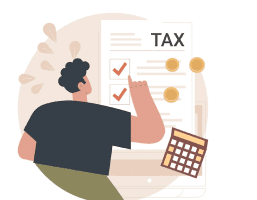The Internal Revenue Service reminds taxpayers today that the fastest and easiest way to check on tax refunds is by using the Where’s My Refund? tool on IRS.gov or through the IRS2Go mobile app.
This year, more than ever before, those who don’t normally have to file a tax return may wish to do so to get child-related tax credits that were expanded by the American Rescue Plan. These include the Child Tax Credit and the Child and Dependent Care Credit PDF.
Refund updates
Filing electronically and using direct deposit is the safest and fastest way to file an accurate return and receive a tax refund. Taxpayers can use Where’s My Refund? to start checking their refund status within 24 hours after an e-filed return is received or four weeks after the taxpayer mails a paper return.
The tool’s tracker displays progress through three phases:
• Return Received,
• Refund Approved and
• Refund Sent.
Refund timing
Most tax refunds are issued within 21 days, however, some may take longer. There are several reasons this can happen:
• The return includes a claim for the Earned Income Tax Credit or Additional Child Tax Credit.
• The time between the IRS issuing the refund and the bank posting it to an account may vary since many banks do not process payments on weekends or holidays.
• The return may require additional review.
• The return may include errors or be incomplete.
• The return could be affected by identity theft or fraud.
The IRS will contact taxpayers by mail if more information is needed to process a return.
Earned Income Tax Credit and the Additional Child Tax Credit
Due to changes to the tax law made by the Protecting Americans from Tax Hikes Act (PATH Act), the IRS can’t issue Earned Income Tax Credit (EITC) or Additional Child Tax Credit (ACTC) refunds before mid-February. This includes the entire refund, not just the part that’s related to the credit claimed on a tax return.
Where’s My Refund? and IRS2Go are updated for most early EITC/ACTC filers with an estimated deposit date by February 19, if they file their taxes early.
If a filer claimed the EITC or the ACTC, they can expect to get their refund March 1 if:
• They file their return online,
• They choose to get their refund by direct deposit and
• No issues were found with their return.
Ignore refund myths
Some taxpayers mistakenly believe they can expedite their refund by ordering a tax transcript, calling the IRS or calling their tax preparer. Ordering a tax transcript will not help a taxpayer get their refund faster or find out when they’ll get their refund. The information available on Where’s My Refund? is the same information available to IRS telephone assistors.
Taxpayers can find answers to questions, forms and instructions and easy-to-use tools at IRS.gov. This news release is part of a series called the Tax Time Guide, a resource to help taxpayers file an accurate tax return. Additional help is available in Publication 17, Your Federal Income Tax (For Individuals)
